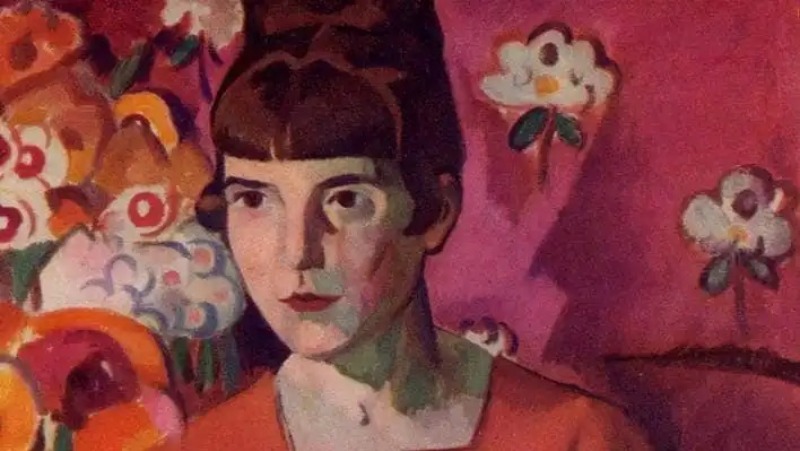Described as a “liminar” by biographer Sarah Ailwood, it is this personal aspect of the Katherine Mansfield context that shapes her approaches to the construction of Miss Brill (1920) On arriving in London “at the age of nineteen determined to make a career for herself as a writer” (Ailwood 2005, p.257) the liminality of Mansfield’s personality stems from how migrating from New Zealand to London “impact[ed]… her class and status” (Ailwood 2005, p.257). It is this complex yet profound idea that exists as Mansfield’s literary identity, functioning as the basis for questioning her position in society – that being her inability to define the milieu by which she comfortably belongs. As suggested by Raymond Williams from an epistemological perspective, there is great difficulty “…in the twentieth century to find a community” (Williams 1972, 589). Reflective of this statement, in this essay, I will be exploring how Mansfield manipulates focalisation to effectively define her fabula though the personal delusions Miss Brill develops to rationalise her life of isolation and solitude. I will also be deconstructing the significance of stylistic contagion and Mansfield’s attempt to transcend contemporary narrative form through the exploration of the liminar with the power of intricate metaphorical and symbolic manifestations.
In constructing the text’s fabula and characterisation in a manner which simultaneously connects and excludes Miss Brill from her “brilliantly fine” environment, we are able to identify how she utilises her delusions to define and justify her position in society. Taking this into account, it’s impossible to ignore the duality within Miss Brill’s observations of her surroundings. Weather it be her disappointment in failing to eavesdrop on a conversation between “a fine old man in a velvet coat” and the “big old woman, sitting upright” or spectating the affairs between “two young girls” and “two young soldiers,” it’s clear that Miss Brill has a hyper fixation on the lives of others, suggesting a possible distaste for the solidarity of her own. Mansfield’s use of focalisation thus suggests that the text’s fabula is defined by a single woman’s life of loneliness and misery. Miss Brill, as a coping mechanism, attempts to liken her Sunday pas-time to be “exactly like a play” and that “they [the public] were all on the stage.” Here Mansfield’s clearly illustrates the development of her delusion as a way to rationalise her purpose for her daily attendance of the “Jardins Publiques” despite being referred to as a “stupid old thing” by those whom she finds tranquillity in spectating. Miss Brill’s delusion develops, by suggesting that everyone at the park is “acting” and that “even she had a part.” she later elaborates, telling herself that without a doubt “somebody would have noticed if she hadn’t”t been there” due to her being “part of the performance after-all.” Her evident self justifying remarks reveal to the readers that she remains within a personal pursuit for a sense of self worth, utilising a theatrical reality as a delusional metaphor for combating the debilitating isolation and loneliness she cannot escape with ease.
Frequently narrated throughout the text is Miss Brill communicating with “her fur,” further illustrating the delusions manifested due to her isolated livelihood. Mansfield’s prominent use of stylistic contagion provides readers with a degree of ambiguity regarding the focalisation within the text, signifying a heartache that Miss Brill silently endures. Miss Brill”s excitement in taking “it [the fur] out of its box” suggests its great sentimental value, however, the narratorial perspective briefly switches to what appears to be Miss Brill speaking, instead of the consistent third person narration of the text. In stating “Dear little thing! It was nice to feel it again.” Perspective once again switches as stylistic contagion is then used by the coat itself, asking rhetorically “what has been happening to me?” as Miss Brill “[shook] out the moth powder [and] gave it a good brush.” Once again, Miss Brill appears to humanise the fur coat, providing it with an identity other than an inanimate object illustrated by her attempt to “[rub] life back into the dim little eyes.” It is by this almost fragmentary use of stylistic contagion that is indicative of Miss Brill’s own fragmentary perception of her position within society, allowing us as readers to sympathise with her debilitating feeling of isolation. It becomes clear that the coat is reminiscent of Miss Brill’s youth, most likely a time devoid of the solitude and misery she currently experiences. Within the concluding sentence Miss Brill “quickly, without looking, laid it [the coat] inside” and “when she put the lid in she thought she heard something crying.” Mansfield solidifies Miss Brill”s loneliness by clarifying with readers the coat”s symbolism endures a negative shift existing as a reflection of the shame and loneliness that plagues Miss Brill”s present life experience, that she is reminded of a point in time that is now no longer attainable.
Overall, Kathrine Mansfield’s Miss Brill (1920) clearly illuminates the contextual connections of her personal context by utilising the metaphorical and symbolic significance of delusions. Her use of focalisation and stylistic contagion functions together to to express an individual’s ability to search for purpose and utilise their position within a milieu fragmented by age and time.

Leave a comment